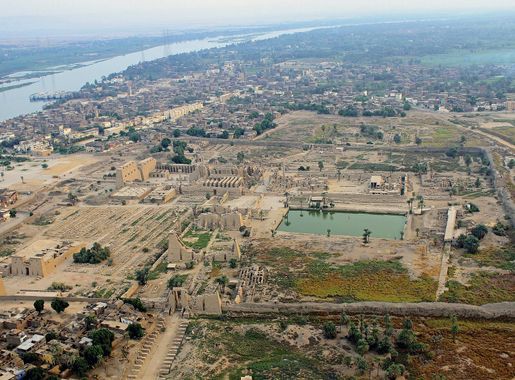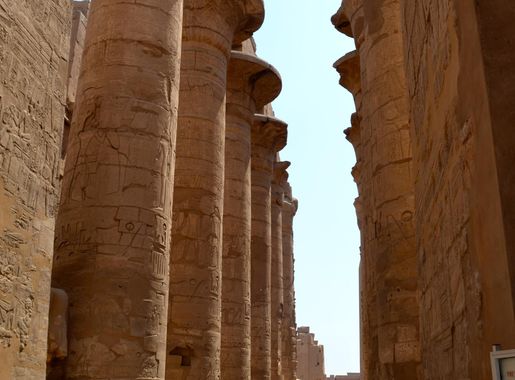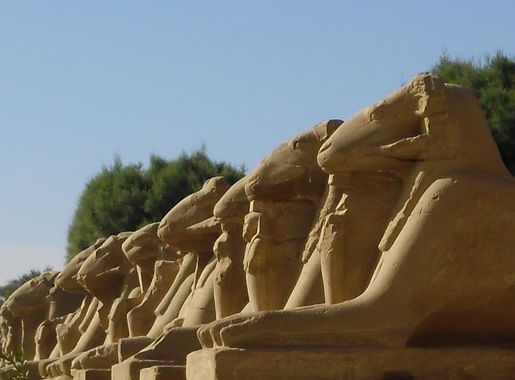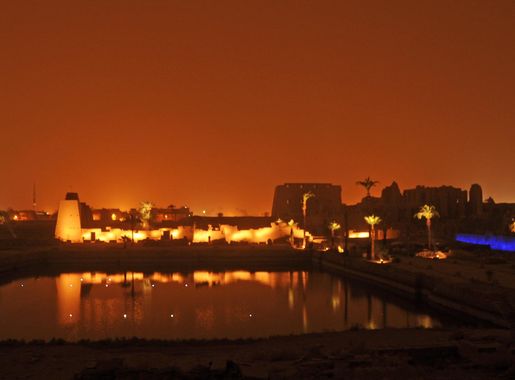
The Timeless Majesty of Karnak: Luxor's Ancient Gem
Discover the ancient splendor of Karnak in Luxor, where history, architecture, and culture converge in an awe-inspiring open-air museum.
Karnak is a marvel of ancient architecture and one of Luxor's most captivating neighborhoods. As you wander through its sprawling temple complex, you'll step back in time to an era of pharaohs and gods. The grand entrance, known as the Avenue of Sphinxes, is lined with statues that guide visitors to the heart of this historical treasure. The Temple of Amun-Ra is the highlight, with its towering columns and intricate hieroglyphs that tell stories of a powerful civilization. Karnak is not just about monumental structures; it is a place where history comes alive. The Sound and Light Show, held in the evenings, offers a mesmerizing narrative of the temple’s past, casting shadows and light on its ancient stones. This area is also a hub for Egyptology enthusiasts, with ongoing excavations and discoveries adding to its rich tapestry. Beyond the temples, Karnak’s surroundings offer a glimpse into local life. The nearby markets are bustling with activity, selling everything from traditional Egyptian crafts to delicious street food. For those interested in a deeper understanding of Karnak's significance, guided tours are available, providing expert insights into the religious and cultural importance of this ancient site.
Local tips in Karnak
- Visit early in the morning to avoid crowds and the heat of the day.
- Bring a hat, sunglasses, and water to stay comfortable during your visit.
- Consider hiring a local guide for a more enriching experience.
- Don't miss the Sound and Light Show in the evening for a unique perspective on the temple.
- Wear comfortable shoes as the site is vast and requires a lot of walking.
The Timeless Majesty of Karnak: Luxor's Ancient Gem
Karnak is a marvel of ancient architecture and one of Luxor's most captivating neighborhoods. As you wander through its sprawling temple complex, you'll step back in time to an era of pharaohs and gods. The grand entrance, known as the Avenue of Sphinxes, is lined with statues that guide visitors to the heart of this historical treasure. The Temple of Amun-Ra is the highlight, with its towering columns and intricate hieroglyphs that tell stories of a powerful civilization. Karnak is not just about monumental structures; it is a place where history comes alive. The Sound and Light Show, held in the evenings, offers a mesmerizing narrative of the temple’s past, casting shadows and light on its ancient stones. This area is also a hub for Egyptology enthusiasts, with ongoing excavations and discoveries adding to its rich tapestry. Beyond the temples, Karnak’s surroundings offer a glimpse into local life. The nearby markets are bustling with activity, selling everything from traditional Egyptian crafts to delicious street food. For those interested in a deeper understanding of Karnak's significance, guided tours are available, providing expert insights into the religious and cultural importance of this ancient site.
Iconic landmarks you can’t miss
Luxor Temple
Experience the grandeur of Luxor Temple, an archaeological masterpiece in the heart of Egypt, showcasing ancient history and architectural brilliance.
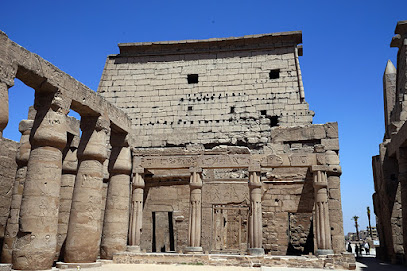
Karnak
Discover the wonders of Karnak Temple, a magnificent historical site in Luxor, showcasing ancient Egyptian architecture and spirituality.
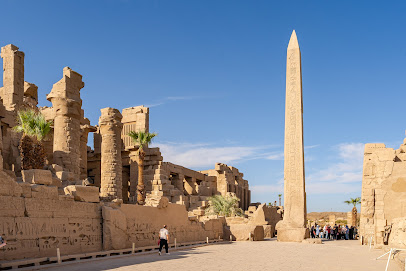
Avenue of the Rams
Explore the majestic Avenue of the Rams in Luxor, Egypt, where history and artistry converge in a breathtaking display of ancient Egyptian culture.
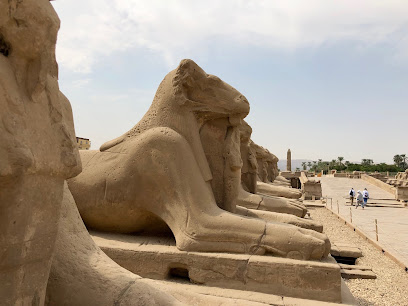
Precinct of Amun-Re
Explore the awe-inspiring Precinct of Amun-Re in Karnak, a monumental testament to ancient Egyptian religion and architecture.
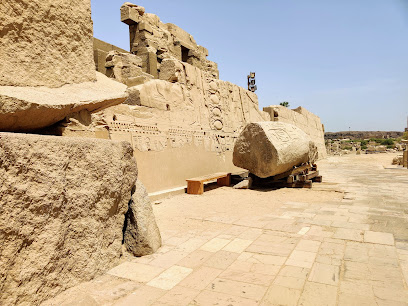
Ramesses III Temple
Discover the grandeur of ancient Egypt at the Ramesses III Temple, a stunning historical landmark in Karnak, Luxor, where history comes alive.
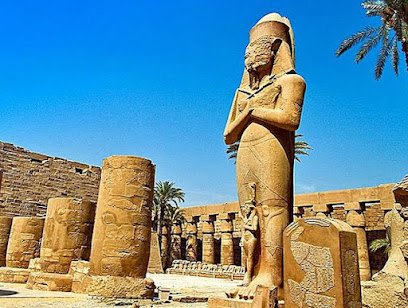
Pillar Hall in Karnak Temple
Experience the grandeur of the Pillar Hall at Karnak Temple, a magnificent historical landmark in Luxor, Egypt, steeped in ancient history and architectural marvel.

Karnak, Egypte
Discover the grandeur of Karnak, a monumental temple complex in Luxor, Egypt, showcasing the architectural brilliance of ancient civilization.
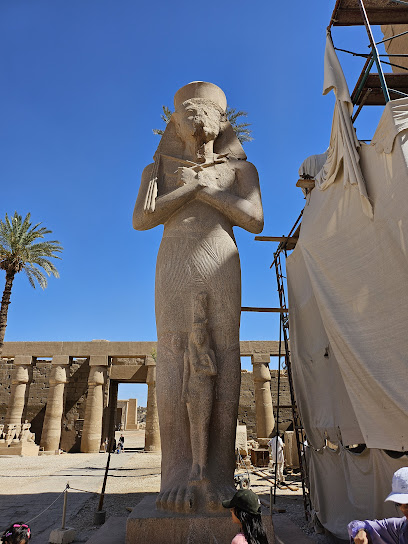
Column of Taharqa
Explore the Column of Taharqa, a stunning historical landmark in Karnak, Luxor, showcasing the extraordinary artistry of ancient Egyptian architecture.
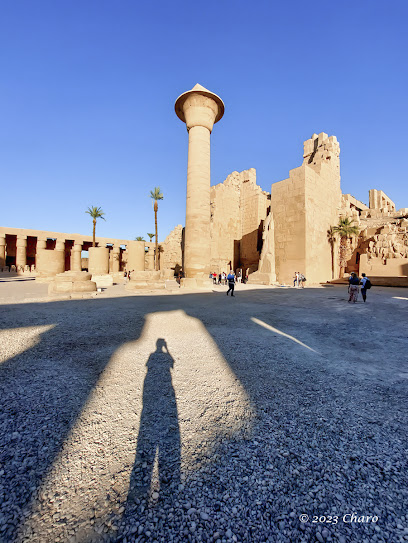
Gateway of Ptolemy III Euergetes
Discover the grandeur of ancient Egypt at the Gateway of Ptolemy III Euergetes in Karnak, Luxor, a monumental tribute to a rich historical legacy.
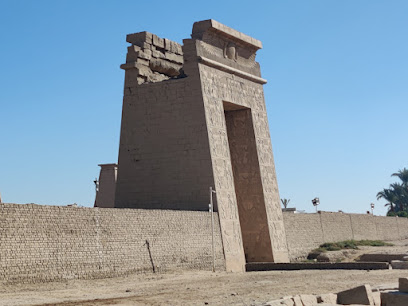
Rovine del tempio di thot
Explore the Temple of Thoth in Luxor, a historical landmark that unveils the mysteries of ancient Egyptian civilization.
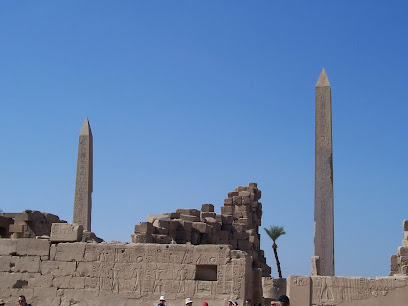
Unmissable attractions to see
Luxor Temple
Explore the grandeur of Luxor Temple, a stunning archaeological site that showcases the brilliance of ancient Egyptian architecture and history.
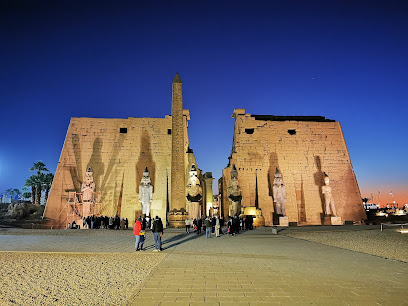
Karnak
Explore Karnak, a magnificent ancient Egyptian temple complex in Luxor, filled with awe-inspiring architecture and rich historical significance.
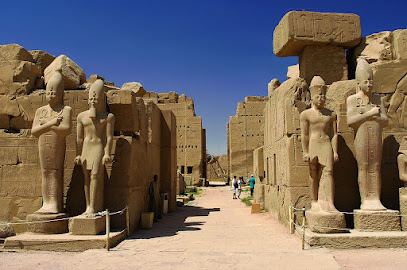
Luxor Museum
Explore Luxor Museum, where Egypt's ancient treasures come to life in a captivating journey through history and culture.
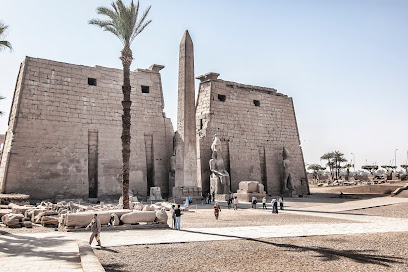
Mummification Museum
Explore the fascinating world of ancient Egypt through the lens of mummification at Luxor's Mummification Museum, a must-visit for history enthusiasts.
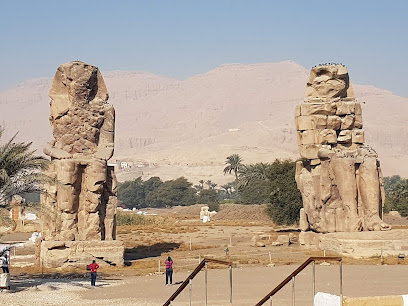
Luxor Temple Ticket Office
Experience the grandeur of Luxor Temple through the Luxor Temple Ticket Office, your gateway to ancient Egyptian history and culture.
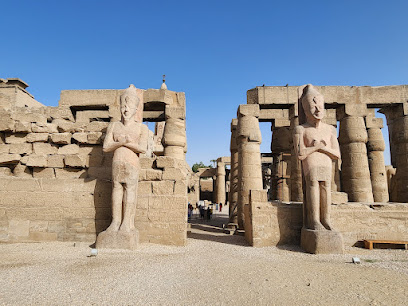
Precinct of Amun-Re
Explore the awe-inspiring Precinct of Amun-Re in Karnak, a UNESCO World Heritage Site, and delve into the mysteries of ancient Egyptian civilization.
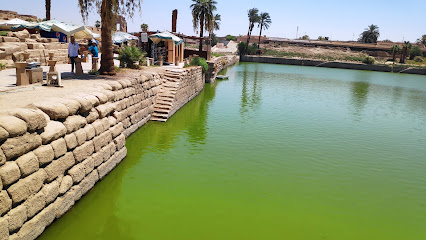
Ramesses III Temple
Explore the Ramesses III Temple in Luxor, a remarkable historical landmark showcasing ancient Egyptian artistry and culture.
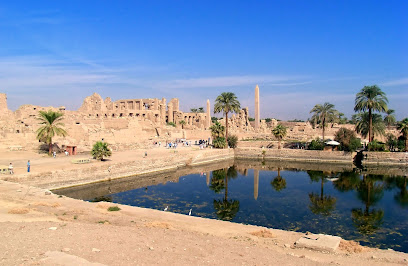
First Pylon Luxor Temple
Explore the grandeur of the First Pylon at Luxor Temple, a breathtaking historical landmark steeped in ancient Egyptian culture and architectural brilliance.
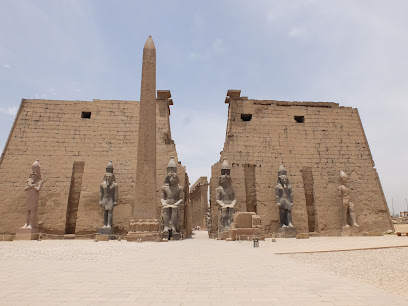
Maadi Square
Experience the vibrant culture and historical charm of Maadi Square in Luxor, Egypt, a must-visit destination for every traveler.
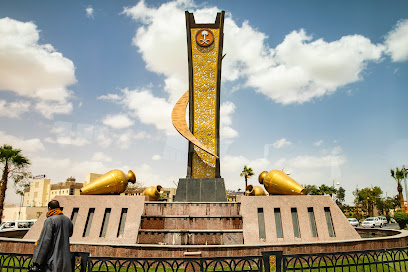
Karnak, Egypte
Discover the awe-inspiring Karnak Temple Complex, an ancient marvel in Luxor, Egypt, showcasing the grandeur of Egyptian civilization.
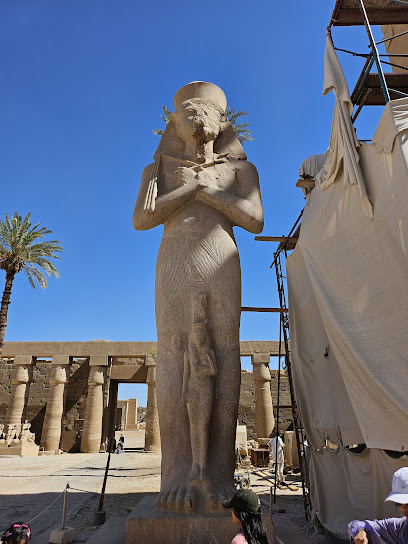
Gateway of Ptolemy III Euergetes
Discover the ancient majesty of the Gateway of Ptolemy III Euergetes in Karnak, Luxor, a monumental entrance steeped in Egyptian history and architectural grandeur.
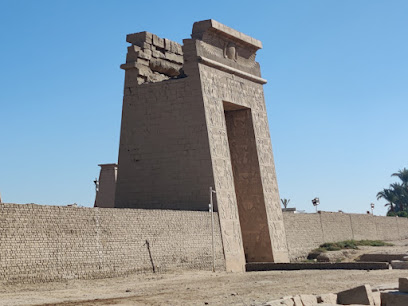
Luxor
Discover Luxor, a timeless destination where ancient history comes to life amidst stunning temples and vibrant culture along the majestic Nile River.
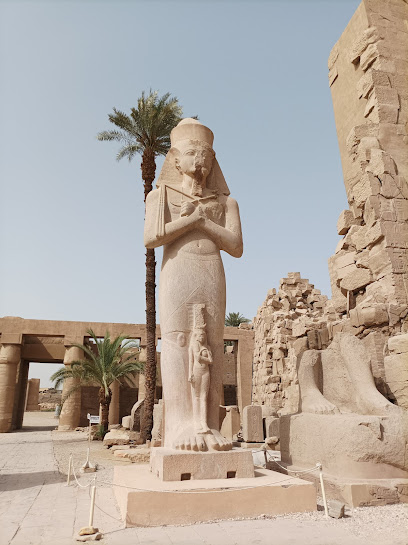
Visita Luxor
Discover the breathtaking Karnak Temple in Luxor, Egypt—an ancient marvel filled with rich history, monumental architecture, and captivating stories.

Essential places to dine
El Hussein Restaurant
Experience authentic Egyptian cuisine at El Hussein Restaurant in Luxor, where traditional flavors meet modern dining.
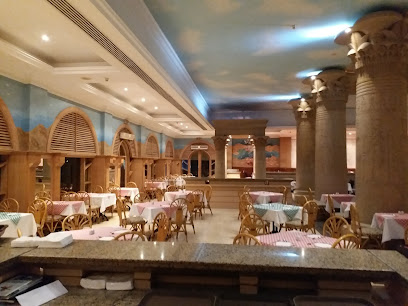
Beyt Ward Restaurant and cafe shop
Discover authentic Egyptian flavors at Beyt Ward Restaurant in Luxor's Karnak district - where tradition meets taste in every bite.
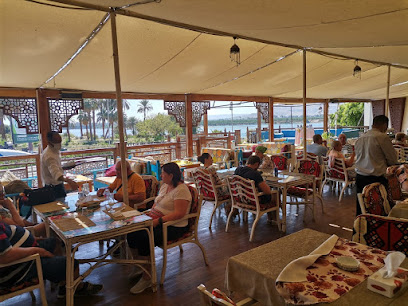
White Coffee & Restaraunt
Discover delicious Arab cuisine at White Coffee & Restaurant in Karnak, Luxor – where tradition meets modern comfort.
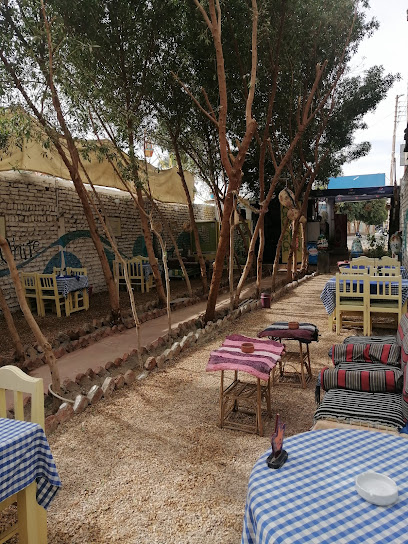
بيت ورد. Bayt ward
Discover Bayt Ward in Luxor: A Barbecue Haven Offering Authentic Flavors and Inviting Atmosphere.
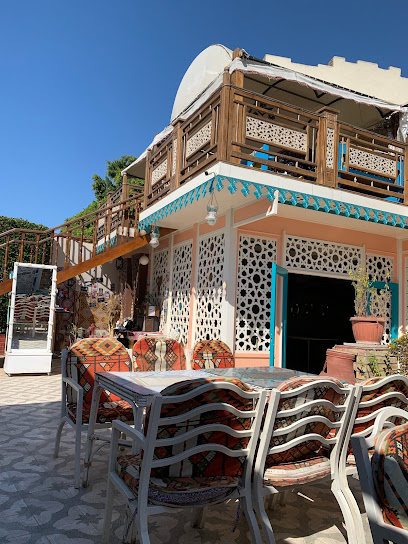
مطعم النيل السياحى - Nile Restaurant Luxor
Experience authentic Egyptian cuisine with stunning views at Nile Restaurant Luxor – where every meal is a memorable adventure.
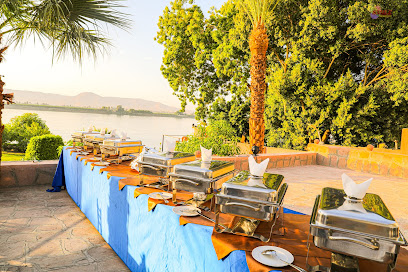
El Tawab Restaurant & Coffee Shop
Discover El Tawab Restaurant & Coffee Shop near Karnak Temple Square - where authentic Egyptian flavors meet inviting ambiance.
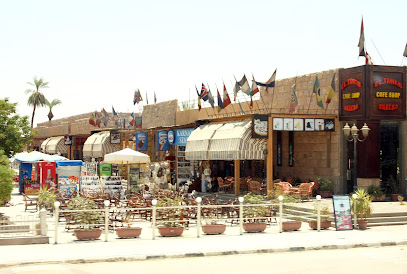
Olives
Experience exquisite Egyptian cuisine at Olives in Karnak, Luxor – where fine dining meets rich cultural heritage.
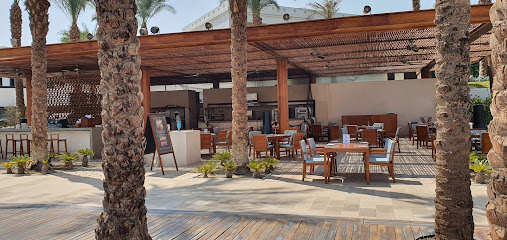
Casablanca Restaurant
Experience authentic Egyptian cuisine at Casablanca Restaurant in Luxor - where tradition meets taste.
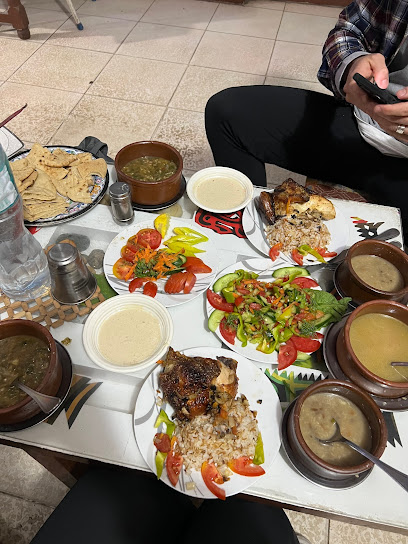
Rosetta
Experience the rich flavors of Egyptian cuisine at Rosetta Buffet in Karnak, Luxor - where every meal is a celebration.
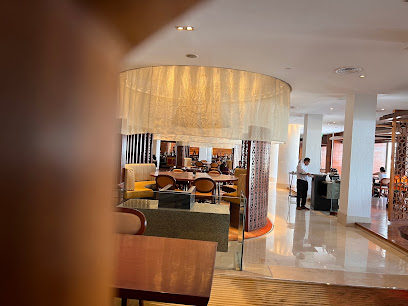
Caribbean
Discover authentic Caribbean cuisine in Luxor; a flavorful journey awaits with vibrant dishes and welcoming hospitality.

Markets, malls and hidden boutiques
SHOP SANDOUK . HandCrafts-FairTrade
Explore Shop Sandouk in Luxor for unique handcrafted souvenirs that celebrate Egyptian culture and support local artisans through fair trade.
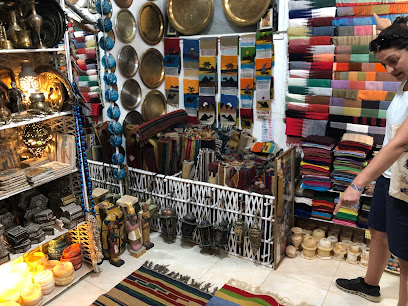
Hamees Papyrus
Explore Hamees Papyrus in Luxor for unique souvenirs that capture the essence of Egypt's rich cultural heritage and artistry.
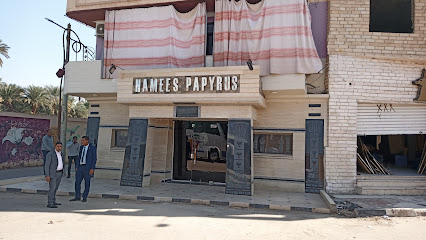
Old Shop
Explore Old Shop in Luxor: A Hidden Gem for Handcrafted Jewelry, Antiques, and Artistry that Captures the Essence of Egyptian Culture.

Anubis shop for souvenirs
Explore Anubis Shop for Souvenirs in Luxor for authentic Egyptian treasures and unique gifts to cherish your travel memories.
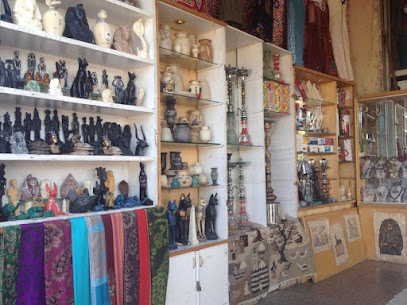
Cleopatra Perfume Oils Palace
Explore the luxurious world of handcrafted perfume oils at Cleopatra Perfume Oils Palace in Luxor, where ancient traditions meet modern elegance.

Merit Aton
Explore the rich heritage of Egypt at Merit Aton, the ultimate antique store in Luxor, showcasing timeless treasures and unique artifacts.
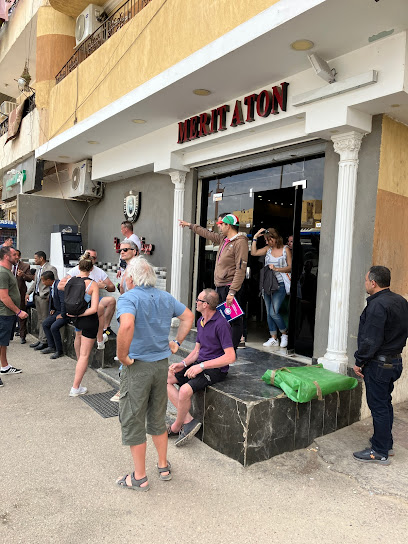
محلات الحاج عبده للملابس والمفروشات الجاهزة
Explore المحلات الحاج عبده for exquisite clothing and home textiles in the heart of Luxor, where tradition meets modern elegance.

New Karnak Papyrus Instute
Explore Egypt's rich heritage at the New Karnak Papyrus Institute, where ancient craftsmanship meets modern artistry in Luxor.
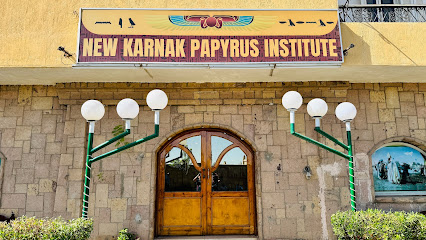
New Isis papyrus museum
Explore the New Isis Papyrus Museum in Luxor, a captivating journey through ancient Egyptian art and culture showcasing exquisite papyrus artifacts.
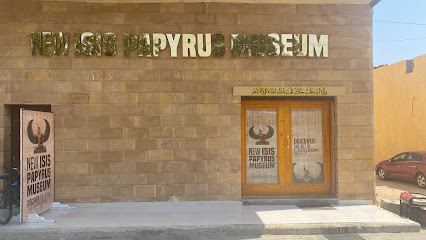
World Famous Bazaar
Explore Luxor's World Famous Bazaar, a vibrant gift shop offering authentic Egyptian treasures and a unique cultural experience.
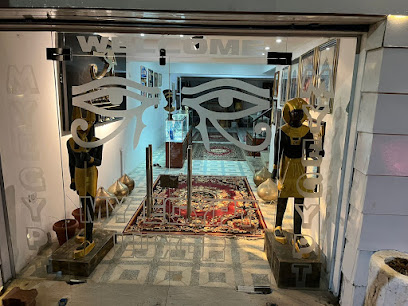
Essential bars & hidden hideouts
El Hussein Restaurant
Experience the rich flavors of Egyptian cuisine at El Hussein Restaurant in Karnak, Luxor - a culinary haven for meat lovers.
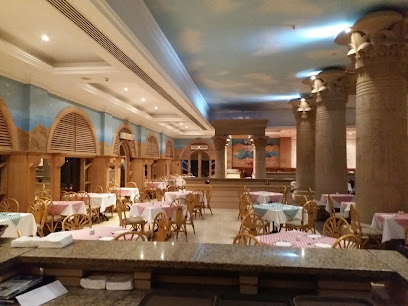
Beyt Ward Restaurant and cafe shop
Experience authentic Egyptian flavors at Beyt Ward Restaurant near Karnak Temples, Luxor's culinary treasure.
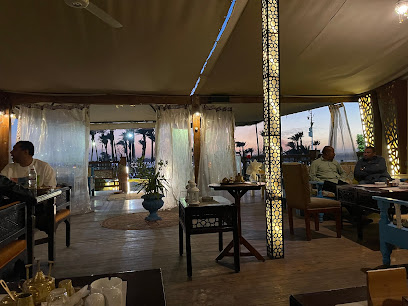
White Coffee & Restaraunt
Experience the best of traditional Arab cuisine and modern coffee culture at White Coffee & Restaurant in Karnak, Luxor.
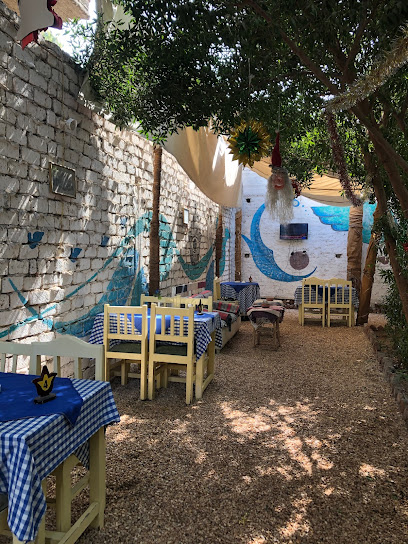
Snack Time
Experience the vibrant flavors of Egypt at Snack Time, your go-to spot for authentic cuisine and delicious pizza delivery in Luxor.

مطعم النيل السياحى - Nile Restaurant Luxor
Savor the authentic taste of Egypt at Nile Restaurant Luxor, where traditional flavors meet stunning Nile views.
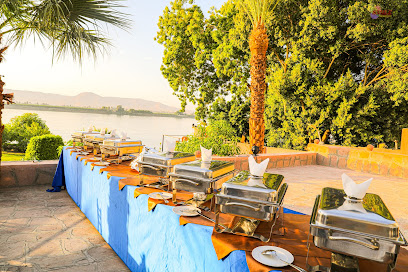
El Tawab Restaurant & Coffee Shop
Experience the flavors of Luxor at El Tawab Restaurant & Coffee Shop, where local cuisine meets international delights near Karnak Temple.
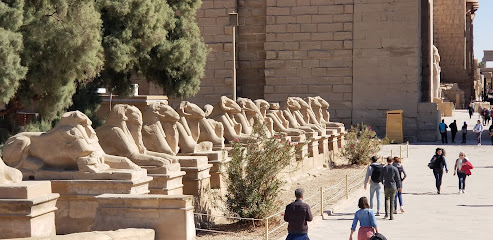
Olives
Experience the finest dining in Karnak at Olives, where Egyptian tradition meets modern cuisine in an elegant setting.
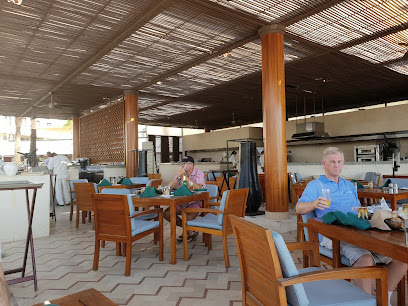
Arabi Paradise
Experience the authentic flavors of Egypt at Arabi Paradise, a culinary gem in Luxor that delights every palate.
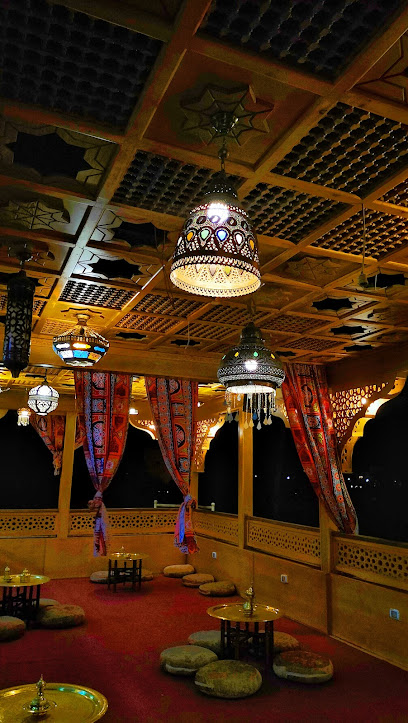
Karnak Restaurant
Discover the flavors of Egypt at Karnak Restaurant in Luxor, where authentic cuisine meets a welcoming atmosphere for an unforgettable dining experience.
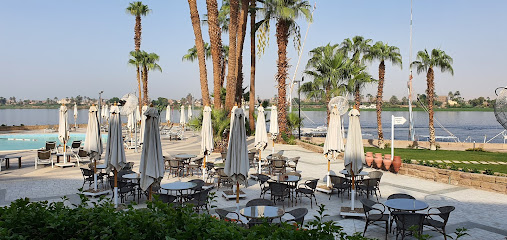
Rosetta
Experience the vibrant flavors of Egyptian cuisine at Rosetta, a buffet restaurant in Karnak, Luxor, offering a delightful range of dishes for every palate.
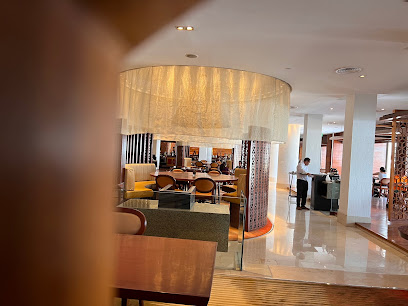
Local Phrases
-
- Helloمرحبا
[marhaba] - Goodbyeوداعا
[wadaan] - Yesنعم
[naam] - Noلا
[laa] - Please/You're welcomeمن فضلك/على الرحب والسعة
[min fadlak/ala alrahb wasaea] - Thank youشكرا
[shukran] - Excuse me/Sorryعذرا
[aadhara] - How are you?كيف حالك؟
[kayf halik?] - Fine. And you?بخير. وأنت؟
[bukhayr. want?] - Do you speak English?هل تتحدث الإنجليزية؟
[hal tatahadath al'inglizia?] - I don't understandلا أفهم
[la afham]
- Helloمرحبا
-
- I'd like to see the menu, pleaseأريد أن أرى القائمة، من فضلك
[urid an ara alqaimah, min fadlak] - I don't eat meatأنا لا أكل اللحوم
[ana la akl allahm] - Cheers!في صحتك!
[fi sahtik!] - I would like to pay, pleaseأريد أن أدفع، من فضلك
[urid an adfa, min fadlak]
- I'd like to see the menu, pleaseأريد أن أرى القائمة، من فضلك
-
- Help!النجدة!
[alnajdah!] - Go away!انصرف!
[ansraf!] - Call the Police!اتصل بالشرطة!
[itassal bialshurta!] - Call a doctor!اتصل بطبيب!
[itassal bitabib!] - I'm lostأنا ضائع
[ana daie] - I'm illأنا مريض
[ana mareed]
- Help!النجدة!
-
- I'd like to buy...أريد أن أشتري...
[urid an ashtari...] - I'm just lookingأنا فقط أتطلع
[ana faqat atatalla] - How much is it?بكم؟
[bikam?] - That's too expensiveهذا غالي جدا
[hatha ghali jiddan] - Can you lower the price?هل يمكنك خفض السعر؟
[hal yumkinuk khaafid alsaeer?]
- I'd like to buy...أريد أن أشتري...
-
- What time is it?كم الساعة؟
[kam alsaaah?] - It's one o'clockالساعة الواحدة
[alsaaah alwahidah] - Half past (10)الساعة العاشرة والنصف
[alsaaah alashirah walnusf] - Morningصباح
[sabah] - Afternoonبعد الظهر
[baad alzuhur] - Eveningمساء
[masa] - Yesterdayأمس
[ams] - Todayاليوم
[alyawm] - Tomorrowغدا
[ghadan] - 1واحد
[wahid] - 2اثنان
[ithnaan] - 3ثلاثة
[thalatha] - 4أربعة
[arbaah] - 5خمسة
[khamsah] - 6ستة
[sittah] - 7سبعة
[sabah] - 8ثمانية
[thamaania] - 9تسعة
[tisaa] - 10عشرة
[asharah]
- What time is it?كم الساعة؟
-
- Where's a/the...?أين هو/هي...؟
[ayn huwa/hai...?] - What's the address?ما هو العنوان؟
[ma huwa al'anaan?] - Can you show me (on the map)?هل يمكنك أن تريني (على الخريطة)؟
[hal yumkinuk an tureeni (ala alkharitah)?] - When's the next (bus)?متى الحافلة التالية؟
[mata alhafilah altaliyah?] - A ticket (to ....)تذكرة (إلى ....)
[tazkirah (ila ....)]
- Where's a/the...?أين هو/هي...؟
History of Karnak
-
Karnak, known as Ipet-Isut in ancient Egyptian, is one of the largest religious complexes in the world, dedicated primarily to the Theban triad of Amun, Mut, and Khonsu. Its construction began during the Middle Kingdom (around 2000 BCE) and continued into the Ptolemaic period, reflecting the evolving architectural styles and religious practices over centuries. The vast temple complex covers approximately 200 acres and includes numerous temples, chapels, and pylons, showcasing the grandeur of ancient Egyptian civilization.
-
One of the most significant events associated with Karnak was the Festival of Opet, celebrated annually to honor the god Amun. This festival involved a grand procession from Karnak to Luxor Temple, where the statue of Amun would be taken to unite with the goddess Mut. The event reinforced the divine kingship of the pharaoh and was marked by feasting, dancing, and various religious rites, emphasizing the cultural and spiritual significance of the temple complex in ancient Egyptian society.
-
During the New Kingdom (around 1550-1070 BCE), Thebes, where Karnak is located, became the capital of Egypt, and the city flourished as a center of politics and religion. The construction of monumental structures at Karnak, including the Hypostyle Hall and the Great Temple of Amun, symbolized Thebes' dominance and the pharaohs' devotion to the gods. The art and architecture from this period have profoundly influenced subsequent cultures and continue to attract scholars and tourists alike.
-
Following the decline of the pharaonic power and the rise of Christianity, Karnak fell into neglect, with many of its structures being repurposed or destroyed. However, the site remained known to locals and travelers through the centuries. It wasn't until the 19th century that serious archaeological efforts began, leading to extensive excavations and restorations that unveiled the site's historical significance and architectural splendor to the world.
-
Today, Karnak is a UNESCO World Heritage Site and one of Egypt's most visited attractions, drawing millions of tourists each year. The complex serves as a testament to ancient Egyptian engineering and religious practices, while also contributing to the cultural identity of modern Luxor. Ongoing archaeological research continues to provide insights into the daily lives of the ancient Egyptians and the significance of Karnak in their society.
Karnak Essentials
-
Karnak is easily accessible from various neighborhoods in Luxor. You can take a taxi or a local minibus (microbus) from downtown Luxor, which should take around 10-15 minutes. Alternatively, horse-drawn carriages (calèches) are a popular and scenic way to reach Karnak from nearby areas. If you are coming from Luxor International Airport, taxis are available, and the journey to Karnak takes approximately 30 minutes.
-
Karnak is primarily a pedestrian-friendly area, especially around the temple complex itself. Visitors can walk through the expansive grounds to fully appreciate the monuments. Local taxis and calèches can be hired for longer distances or to explore nearby attractions. Bicycle rentals are also available, allowing for a leisurely ride through the area. Public transport options are limited in Karnak, so personal transportation is recommended.
-
Karnak is generally safe for tourists, but standard precautions should be observed. Avoid walking alone late at night and be cautious with your belongings in crowded areas. Petty crime can occur, particularly around popular tourist spots. The nearby neighborhoods of downtown Luxor may have higher crime rates, so it's advisable to stay vigilant and avoid poorly lit areas after dark.
-
In case of an emergency, dial 122 for police assistance or 123 for ambulance services. Local hospitals are available in Luxor, and it's recommended to have travel insurance that covers medical emergencies. For minor health issues, pharmacies are located throughout Luxor, including near Karnak.
-
Fashion: Do dress modestly, especially when visiting temples. Avoid revealing clothing and ensure shoulders and knees are covered. Religion: Do respect local customs; refrain from taking photos in restricted areas and avoid loud behavior in places of worship. Public Transport: Do be courteous and offer your seat to the elderly. Don't eat or drink on public transport. Greetings: Do greet locals with a smile and a polite 'Salam'. Don't use overly casual language. Eating & Drinking: Do try local cuisines and accept offers of food graciously. Don't refuse hospitality, as it can be considered rude.
-
To experience Karnak like a local, visit early in the morning to avoid crowds and enjoy the serene atmosphere. Engage with local vendors selling crafts and souvenirs, and don't hesitate to ask questions about the history of the area. Attend a sound and light show at Karnak Temple in the evening for a unique perspective on its history. Consider joining a guided tour for in-depth knowledge about the temple's significance and architecture.
Nearby Cities to Karnak
-
Things To Do in Sohag
-
Things To Do in Aswan
-
Things To Do in Hurghada
-
Things To Do in El Gouna
-
Things To Do in Asyut
-
Things To Do in Marsa Alam
-
Things To Do in Sharm El Sheikh
-
Things To Do in Minya
-
Things To Do in Dahab
-
Things To Do in Beni Suef
-
Things To Do in Suez
-
Things To Do in Eilat
-
Things To Do in Aqaba
-
Things To Do in Tabuk
-
Things To Do in Cairo

